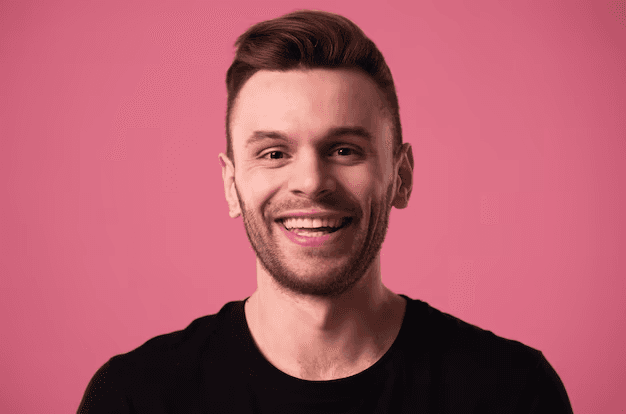February 18, 2025
How to Start a Successful Fashion Brand: From Vision to Launch
Learn how to start a fashion brand from scratch, covering business setup, market research, design development, and the essential steps to launching successfully.
Starting a Fashion Brand & Early-Stage Essentials
8-10 min read
Starting a fashion brand is an exciting journey that requires creativity, strategic planning, and business acumen. While having a strong design vision is important, success in fashion also depends on market research, production planning, and brand positioning.
Many aspiring designers struggle with choosing the right business model, finding suppliers, and marketing their brand effectively. This guide will walk you through the essential steps to starting a fashion brand, from developing your concept to launching your first collection.
Step 1: Define Your Brand Vision & Niche
Before designing your first piece, clarify what makes your brand unique.
1. Identify Your Niche & Target Market
Are you focusing on luxury, streetwear, sustainable fashion, or athleisure?
Who is your ideal customer (age, lifestyle, buying habits)?
Research current market trends and identify gaps where your brand can stand out.
✔ How PLM Helps:
Stores mood boards, trend reports, and competitive analysis for reference.
✔ How ERP Helps:
Helps with financial planning, ensuring your pricing strategy is viable.
Example: A sustainable activewear startup identified a gap in eco-friendly, size-inclusive leggings and built its brand around that niche.
Step 2: Conduct Market Research & Competitive Analysis
Understanding the industry landscape is key to positioning your brand effectively.
1. Research Your Competitors
Identify similar brands in your niche and analyze their pricing, branding, and customer reviews.
Evaluate their strengths and weaknesses to differentiate your brand.
2. Validate Demand for Your Products
Conduct surveys or focus groups to get insights from potential customers.
Use social media polls or waitlists to gauge demand before investing in inventory.
✔ How PLM Helps:
Tracks competitor product comparisons and industry insights.
✔ How ERP Helps:
Monitors market trends and historical sales data for forecasting demand.
Example: A contemporary streetwear label used Instagram polls to test different hoodie designs before going into production.
Step 3: Register Your Business & Secure Funding
1. Choose Your Business Structure
Sole Proprietorship – Best for small-scale startups.
Limited Liability Company (LLC) – Provides legal protection and flexibility.
Corporation – Ideal for larger, investment-backed businesses.
2. Register Your Brand Name & Trademark
Secure a unique brand name and domain for your website.
Register for a trademark to protect your logo and brand identity.
3. Secure Funding for Your Fashion Brand
Bootstrapping – Self-fund with savings.
Crowdfunding – Pre-sell products via platforms like Kickstarter.
Investors & Loans – Pitch to investors or apply for business grants.
✔ How ERP Helps:
Tracks business expenses, funding, and financial planning.
Example: A new fashion startup successfully raised $50,000 via Kickstarter by offering early-bird discounts to backers.
Step 4: Design & Develop Your First Collection
Once your business is set up, it’s time to bring your designs to life.
1. Sketch & Develop Tech Packs
Create detailed sketches and technical drawings of each garment.
Develop tech packs with fabric specs, measurements, and trims.
2. Source Fabrics & Choose Manufacturers
Work with fabric suppliers that meet your sustainability and quality standards.
Choose between CMT (Cut, Make, Trim) manufacturers or Full-Package Production.
✔ How PLM Helps:
Stores fabric libraries, tech packs, and supplier details in one place.
✔ How ERP Helps:
Manages raw material orders and supplier payments.
Example: A designer launching a limited-edition streetwear line used KOBO PLM to track fabric availability and grading specs.
Step 5: Set Up Your E-Commerce & Sales Channels
Your fashion brand needs a strong digital presence to attract customers.
1. Build Your Website & Online Store
Choose an e-commerce platform like Shopify, WooCommerce, or BigCommerce.
Ensure mobile-friendly design and seamless checkout.
2. Sell Through Multiple Channels
Use social media storefronts (Instagram, TikTok Shop, Pinterest).
List on fashion marketplaces like ASOS Marketplace or Farfetch.
✔ How PLM Helps:
Syncs product data and descriptions across e-commerce platforms.
✔ How ERP Helps:
Tracks inventory across all sales channels in real time.
Example: A new luxury handbag brand increased sales by 40% by using Instagram Shopping and Shopify integration.
Step 6: Market Your Brand & Generate Sales
1. Social Media & Influencer Marketing
Partner with micro-influencers to showcase your brand.
Post behind-the-scenes content to engage your audience.
2. Email Marketing & Retargeting Ads
Create a welcome email series for new subscribers.
Use Facebook and Google retargeting ads to convert website visitors.
3. Launch Your First Collection with a Strong Campaign
Offer limited-time discounts for early adopters.
Host a virtual launch event or pop-up store.
✔ How CRM Helps:
Automates email follow-ups and abandoned cart recovery.
✔ How ERP Helps:
Ensures inventory levels are optimized for launch demand.
Example: A small knitwear brand tripled its online sales after launching a pre-order campaign through email marketing and influencer partnerships.
Why PLM & ERP Are Essential for New Fashion Brands
Conclusion
Starting a fashion brand requires a strong mix of creativity, strategic planning, and technology-driven processes. By integrating PLM for product development and ERP for inventory and financial management, brands can streamline operations and set themselves up for long-term success.
Next Steps:
Book a KOBO PLM demo to simplify your product development process.
Download our Fashion Startup Checklist.
Get expert guidance on launching your brand successfully.











